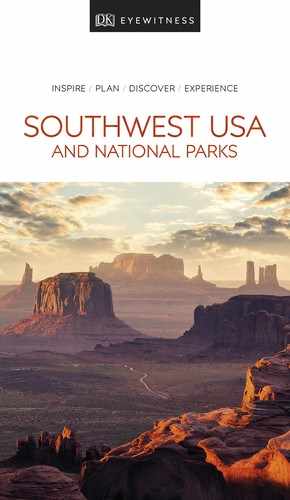Despite its name, this spectacular landmark is not a solitary canyon, but a series of deep, natural amphitheaters. The largest of these, Bryce Amphitheater, is filled with flame-colored pinnacle rock formations called hoodoos, the hallmark of this national park. Bryce Canyon contains more hoodoos than any other place on earth.
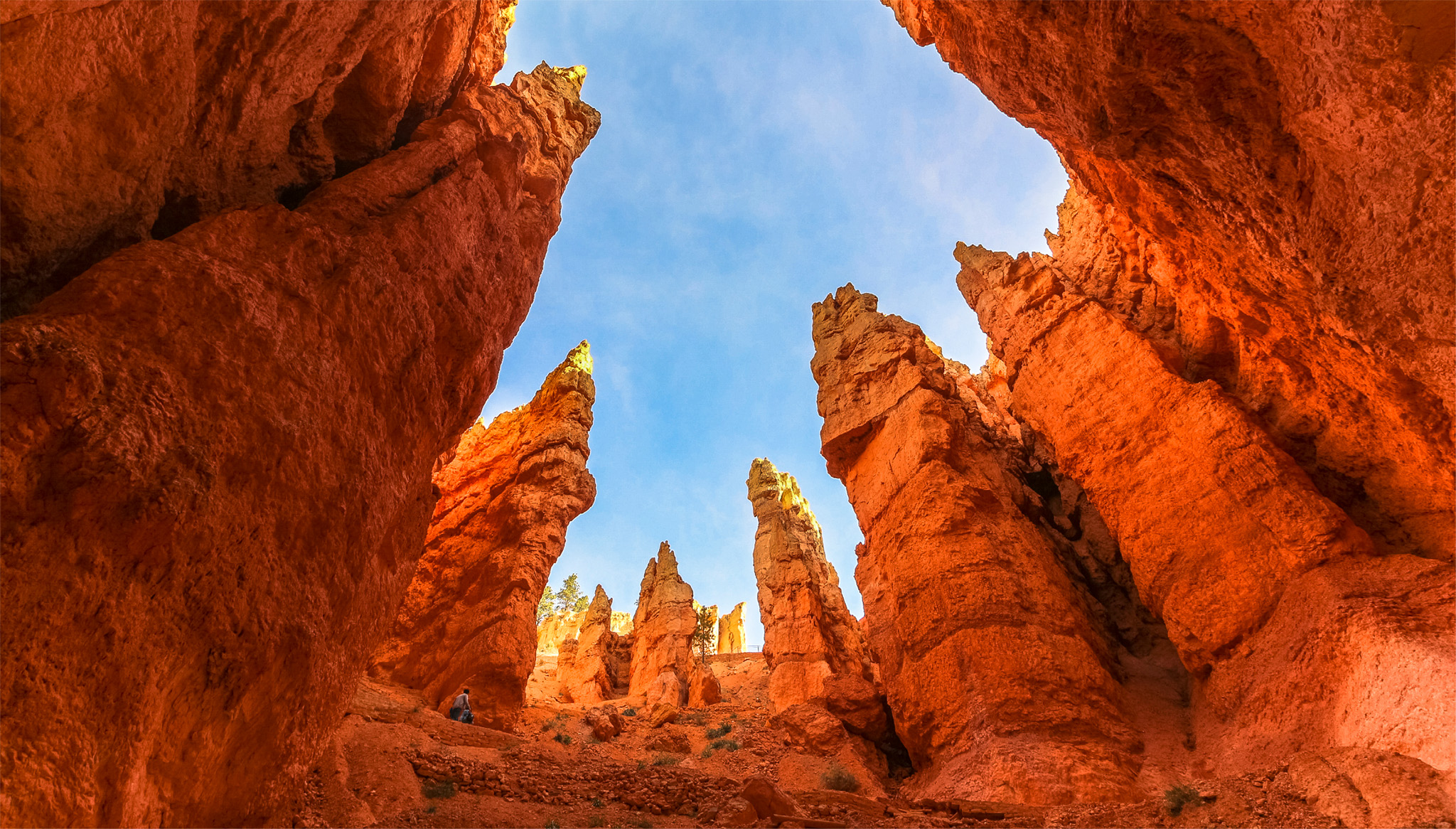
t Hoodoos are formed as rain, wind, and ice erode “fins” of harder rock that become columns. These further erode into strangely shaped hoodoos.
Experience Southern Utah
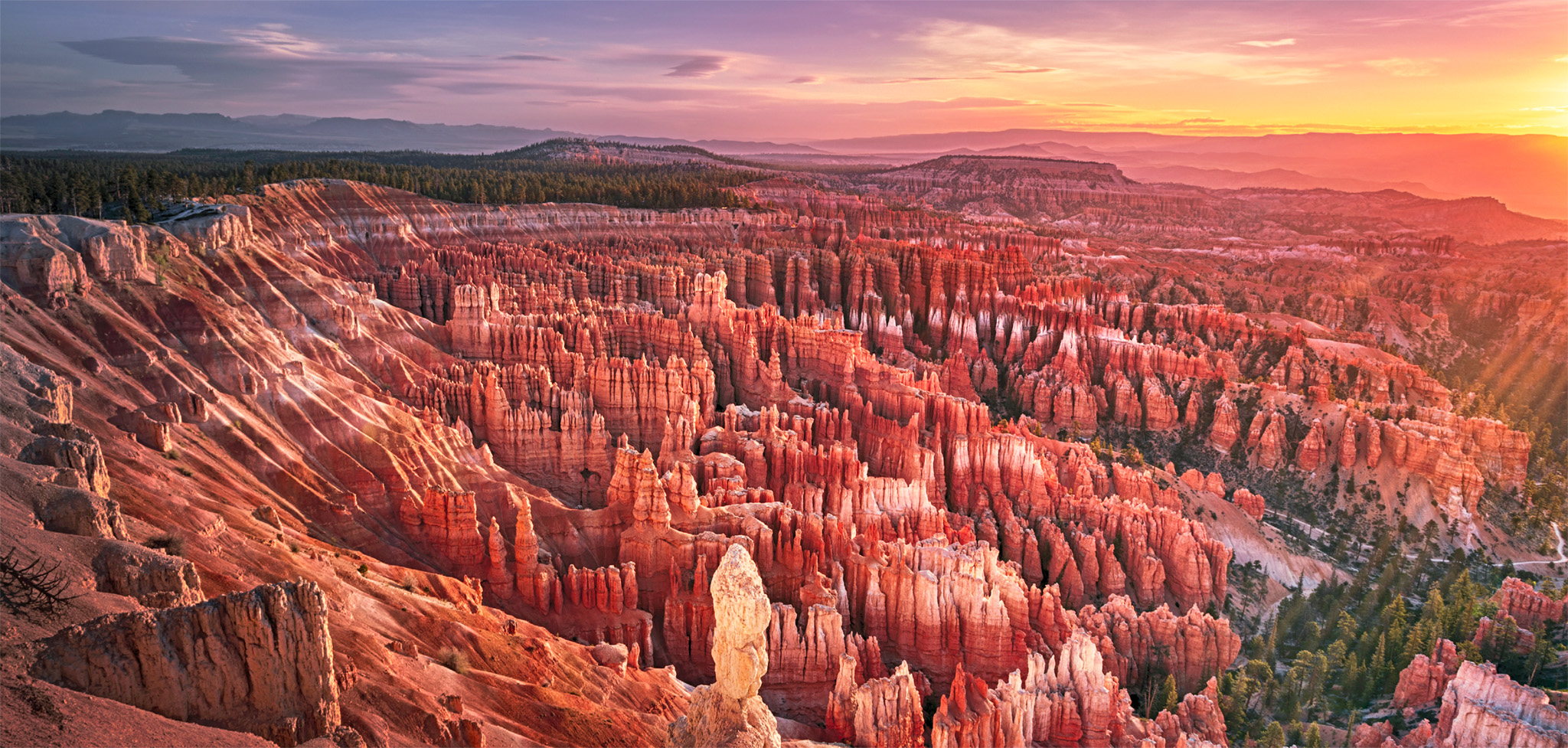
t The hoodoos of Bryce Amphitheater viewed from Inspiration Point at dawn
The Paiute Indians, once hunters here, described these vast, mesmerising fields of irregular pink, orange, and red spires as “red rocks standing like men in a bowl-shaped recess.”
Bryce is high in altitude, reaching elevations of around 8,000–9,000 ft (2,400–2,700 m). A scenic road runs for 18 miles (29 km) along the rim of Paunsaugunt Plateau, from the park’s only entrance in the north to its highest elevation in the south. From April to October, a free shuttle bus operates from the Visitor Center to the four main viewpoints at Sunrise, Sunset, Bryce, and Inspiration Points. There is also a free three-and-a-half-hour bus tour that stops at many more viewpoints and goes all the way to the end at Rainbow Point. From Bryce Point and Sunset Point you can look down over the tight maze of hoodoos and fins known as the Silent City. Nearby is the historic Bryce Canyon Lodge, built in 1923.

GREAT VIEW
Pretty Peaks
Bryce Canyon is famous for its clear skies. Most days, you can see Navajo Mountain, 80 miles (129 km) south on the Utah-Arizona border. On very clear days you can see across the Grand Canyon to Humphrey’s Peak, which is 150 miles (242 km) away.
Exploring Bryce Canyon National Park
The canyon’s maze of pillars and channels is best appreciated on foot. Numerous hiking trails take you down into the bowls where you can walk among the hoodoos and other formations. They include easy day hikes, like the short Queens Garden trail and longer Rim Trail, the moderate Navajo Loop trail through a slot canyon, and the challenging Fairyland and Peek-A-Boo loop trails. Many trails are interconnected. Others share the route with horseback and mule treks to the canyon floor.
Bryce Canyon is breathtakingly beautiful in winter, when snow dusts the colorful pinnacles. After a deep snowfall, snowshoeing, cross-country skiing, and winter hiking are possible in the park. And there are ranger-guided Full Moon Snowshoe Hikes from November to March. Stargazing is spectacular under the park’s natural dark skies – on a clear night, you can see 2.2 million light years to the Andromeda Galaxy. Astronomy programs are offered throughout the year; check the schedule at the visitor center.
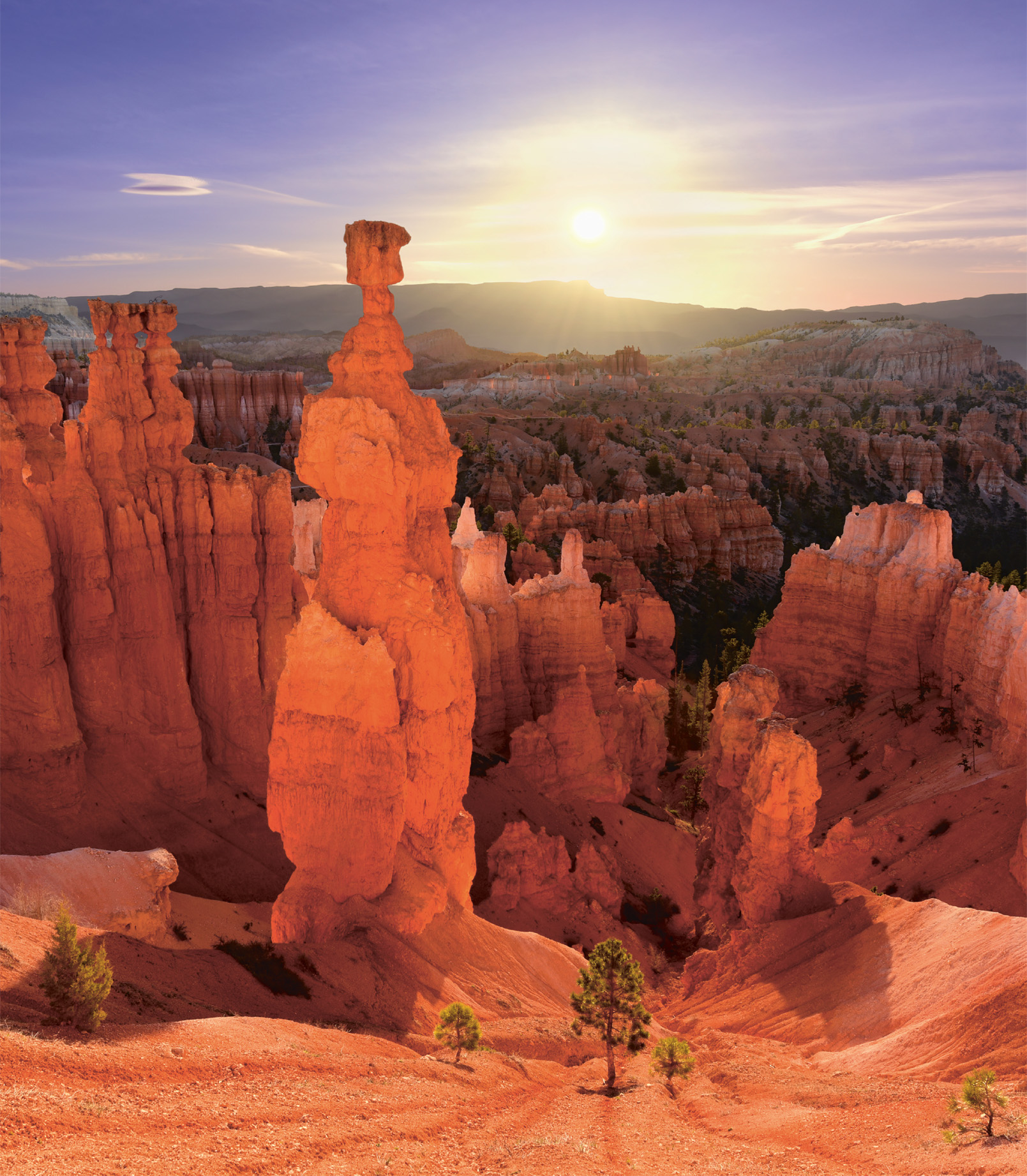
t The towering Thor’s Hammer, one of the more distinctive hoodoos in Bryce Canyon
Experience Southern Utah
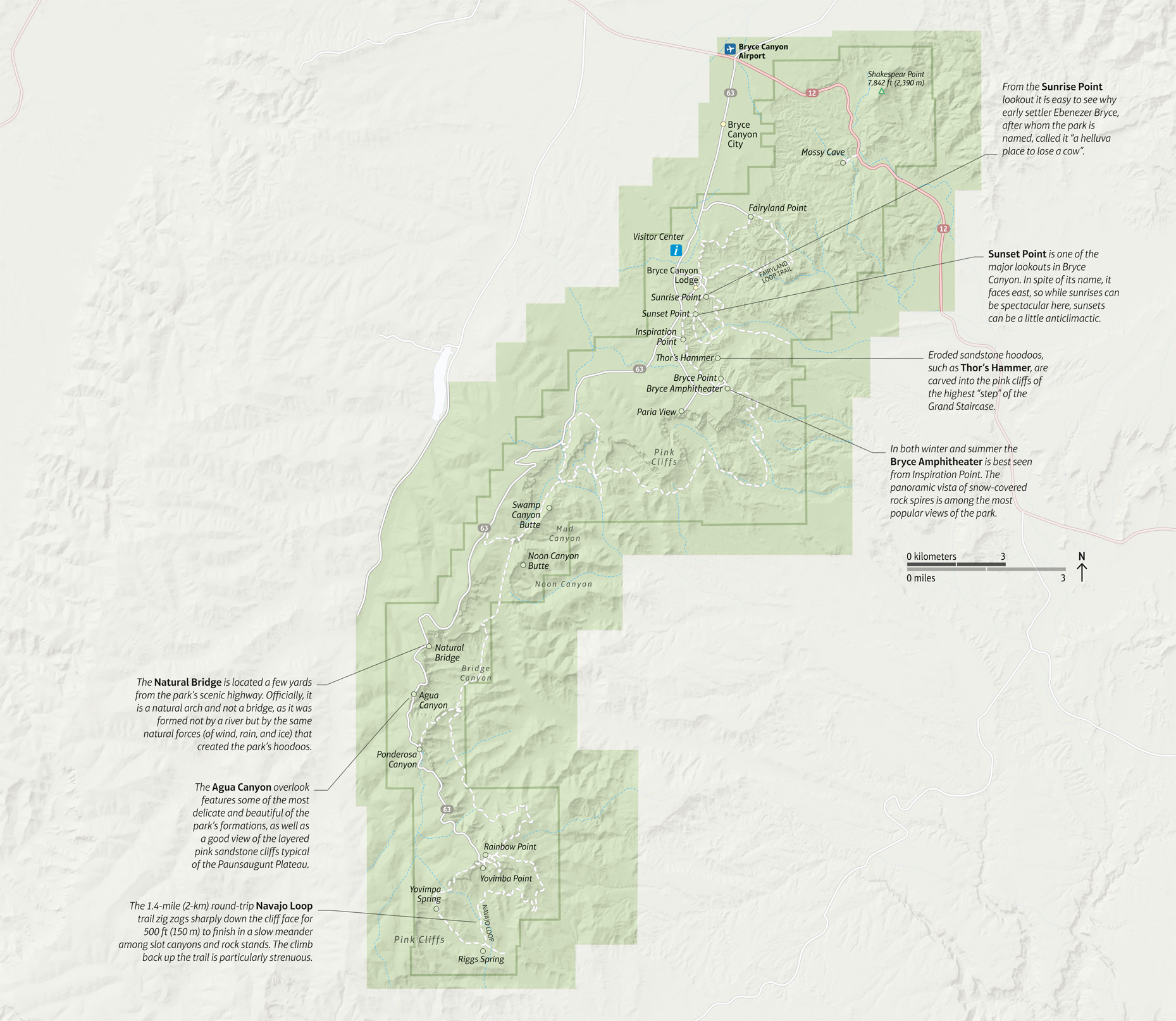
n Double-tap image to read the labels
Bird-Watching
Bryce Canyon provides shelter for 175 bird species, including migratory birds. Violet-green swallows are frequently seen along the Rim Trail. Two os-prey nests are located along the scenic drive. You may also be lucky enough to see pere-grine falcons, eagles, and even the rare California condor, which has been spot-ted from Bryce Point.
